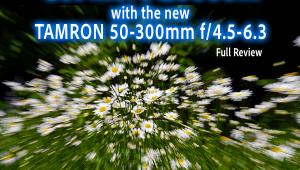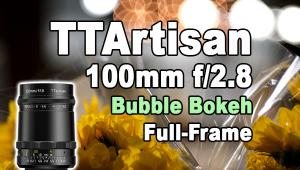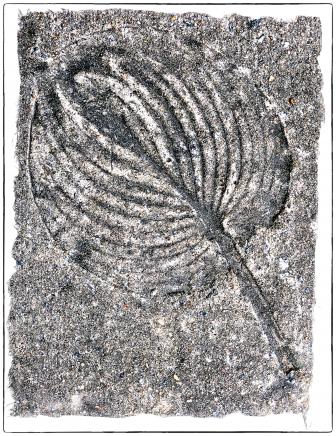Tamron’s AF18-270mm F/3.5-6.3 Di II VC LD Aspherical (IF) MACRO; A Lens For All Seasons And Reasons
Designed specifically for Nikon and Canon D-SLRs with APS-C-size sensors, Tamron’s latest all-purpose lens is even more desirable than the previous 18-250mm Di II model. The newer zoom provides a greater 15x zoom range, incorporating the most popular focal lengths, making this an ideal single lens for those who want versatility with portability. More importantly, it’s equipped with a Vibration Control stabilizer that compensates for camera shake for sharper photos. While this “super zoom” may be ideal for families and those who simply want nice pics, it’s suitable for more serious photographers as well. During a six-week period, I worked with the 19.4 oz lens on a Nikon D90 while recording a wedding, equestrian competitions, as well as various indoor and outdoor events.
 |
Construction And Design
This is a relatively compact lens with a rugged polycarbonate barrel and metal lens mount. Very nicely finished in matte black, the barrel features wide, rubberized focus and zoom rings with smooth operation. When zoomed, the (lightweight) internal barrel extends—by a full 3.5” at the 270mm zoom setting—but overall balance is not affected to any obvious extent. During AF operation, the focus ring rotates but the front element remains fixed thanks to an Internal Focusing (IF) system; hence, the effect of a polarizer never changes. The AF motor (in both the Canon and Nikon mount models) is conventional, not ultrasonic, so it’s not silent but the low-pitched hum is certainly not objectionable.
Note, too, that this lens can focus very closely as indicated by the “macro” designation. At the longest focal length, maximum magnification is 0.285x according to the Specs. That’s stated in terms of 35mm film photography, but this zoom is intended only for use with D-SLRs with the smaller APS-C-size sensor. Consequently, the apparent maximum magnification is even higher: 0.43x because of field of view crop. Still, the effect certainly simulates greater magnification and is useful for tightly framed shots of a few blossoms in nature photography, for example.
 |
|
|
Like all Tamron Di II lenses, this one is extensively optimized for digital capture. Because a CCD or CMOS sensor produces the best results when all light rays strike the chip straight on, a special system is used to maintain a similar “angle of incidence” across the entire frame. That helps to ensure optimal edge brightness/sharpness. (With older lenses, the light strikes the sensor at an increasingly sharp angle near the edges; particularly at wide angle focal lengths, that can reduce resolution and brightness at the edges.) Because light reflecting from a very shiny silicon sensor can increase the risk of contrast degrading flare, superior multiple-layer coatings are applied to all optical elements.
The optical formula is impressive, too, with one AD (Anomalous Dispersion) element, two pieces of LD (Low Dispersion) glass, plus three hybrid aspherical elements. These different types of glass are used because the optical flaws of broad range zooms are quite different at wide angle and at telephoto. The combination of high-tech elements addresses all types of aberrations as well as linear distortion.
 |
|
|
Image Stabilizer
This is the second Tamron lens to incorporate a Vibration Control (VC) system. While some lenses of other brands are also equipped with a stabilizer mechanism, Tamron employs its own proprietary technology. The VC device features three driving coils and slide balls around the compensator group of the optical system. A gyro detects shake and a 32-bit RISC CPU shifts optical elements as required for the Anti-Shake effects. The incoming light rays are refracted (bent) and the projected image is returned to the center of the frame, increasing the odds of sharp photos. The stabilizing effect is visible in an SLR camera’s viewfinder—or in the LCD during Live View—as a visual indication of its effectiveness.
With the VC switch set to ON, I was consistently able to get sharp photos at 270mm (a 405mm equivalent on a Nikon D90) at 1⁄90 sec in a dark cathedral while hand holding the camera. Roughly half of my images made at 1⁄45 sec were adequately sharp for nice 8x10” glossies. By comparison, with the VC set to OFF, I needed to use a 1/400 sec shutter speed at the same focal length for a high success ratio. When bracing the camera on a solid object, I got a few sharp images even at a 1⁄6 sec shutter speed. As usual, I always snapped several photos during such long exposures; one of the shots was always sharper than the others.
 |
|
|
Performance And Quality
Aside from the benefits of the VC stabilizer, the Tamron 18-270mm zoom proved to be a desirable lens. Autofocus response (with a Nikon D90) was quick with static subjects, and suitable for tracking the motion of marathon runners approaching my position, particularly at 18-190mm. At longer focal lengths, the maximum aperture shrinks to f/6.3, reducing the amount of light reaching the camera’s AF sensor. That did create some autofocus issues, especially during an indoor horse jumping competition while I was shooting at 270mm. For better tracking AF performance, I moved closer to the action and used shorter focal lengths; as with any small aperture lens, this tactic increased my success ratio of sharply focused images.

















































